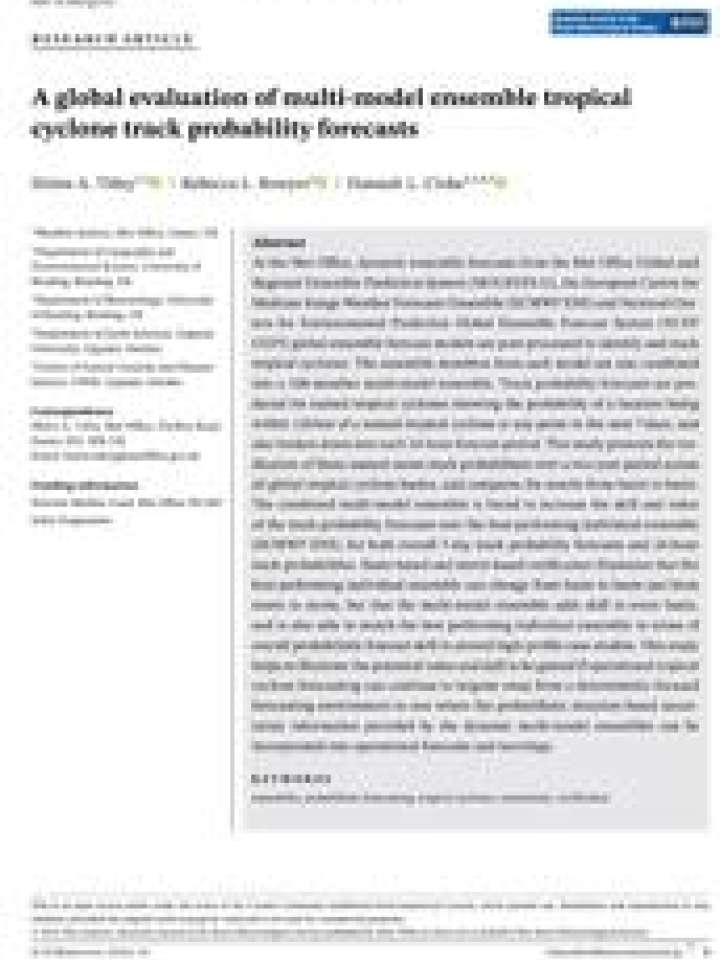A global evaluation of multi‐model ensemble tropical cyclone track probability forecasts
At the Met Office, dynamic ensemble forecasts from the Met Office Global and Regional Ensemble Prediction System (MOGREPS‐G), the European Centre for Medium‐Range Weather Forecasts Ensemble (ECMWF ENS) and National Centers for Environmental Prediction Global Ensemble Forecast System (NCEP GEFS) global ensemble forecast models are post‐processed to identify and track tropical cyclones. The ensemble members from each model are also combined into a 108‐member multi‐model ensemble. Track probability forecasts are produced for named tropical cyclones showing the probability of a location being within 120 km of a named tropical cyclone at any point in the next 7 days, and also broken down into each 24‐hour forecast period. This study presents the verification of these named‐storm track probabilities over a two‐year period across all global tropical cyclone basins, and compares the results from basin to basin.
The combined multi‐model ensemble is found to increase the skill and value of the track probability forecasts over the best‐performing individual ensemble (ECMWF ENS), for both overall 7‐day track probability forecasts and 24‐hour track probabilities. Basin‐based and storm‐based verification illustrates that the best performing individual ensemble can change from basin to basin and from storm to storm, but that the multi‐model ensemble adds skill in every basin, and is also able to match the best performing individual ensemble in terms of overall probabilistic forecast skill in several high‐profile case‐studies. This study helps to illustrate the potential value and skill to be gained if operational tropical cyclone forecasting can continue to migrate away from a deterministic‐focused forecasting environment to one where the probabilistic situation‐based uncertainty information provided by the dynamic multi‐model ensembles can be incorporated into operational forecasts and warnings.
Explore further
